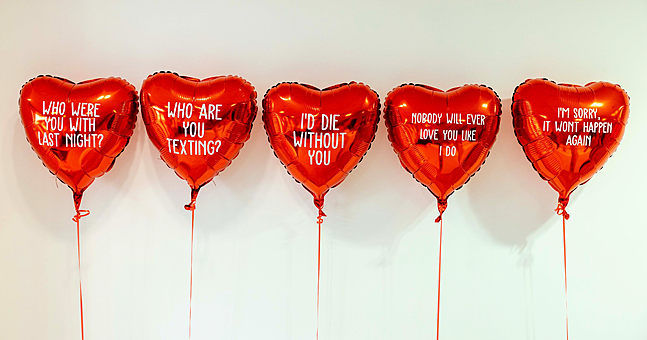
One resource that is commonly used by Domestic Violence (DV) advocates is the “Cycle of Violence”, which is also known as the “Cycle of Abuse”. It was developed by psychologist Lenore Walker in 1979. This idea was detailed in her book, “The Battered Woman.” In this cycle, there are four phases which rotate in an abusive relationship which are as follows:
- Honeymoon Phase
- Calm Phase
- Tension-Building Phase
- Violence Phase
If there is an abusive person in a particular relationship of yours, just pay attention to the “Cycle of Violence” and you should be able to expect what will happen next and then further, determine if you are in an abusive relationship or not.
NOTE: While this cycle usually applies to romantic relationships, it can also apply to family, friends & coworkers. In this first of four articles, we focus on the HONEYMOON PHASE(S).
Definition of The Honeymoon Phase
The Honeymoon Phase in the Cycle of Violence is usually how a romantic relationship starts: A lot of “Love Bombing” occurs, the potential abuser will shower constant attention, gifts, romance, texts and typically will initiate serious relationship conversations with the other person too soon in the relationship. Click below for more information on “Love Bombing”.

While we agree that romance at the beginning of a new romantic relationship is normal (especially if both parties share the same values and priorities in the relationship), it is NOT normal for the relationship to be SO inundated with romance to the point where one person is feeling overwhelmed, controlled or even manipulated to do something they do not want to do or are not ready for.
One key thing to look for in a potentially abusive partner (especially with someone you have only recently met) is to pay attention to whether or not they are being considerate of YOUR feelings, matching your pace of the relationship, not rushing into the romantic side of things or manipulating you into an aspect of the relationship you are not ready for. They may “Love Bomb” you to manipulate you into doing what THEY want you to do, rather than being considerate of your comfort zone(s).
We hope you find a partner that makes you feel safe, happy and special. But if he/she does not make you feel that way consistently, then this is probably a red flag you need to pay attention to.
POST-VIOLENCE HONEYMOON PHASE

For those of you who are already in a relationship, there is potential for a second, (or third or fourth or more) cycle that is the HONEYMOON PHASE. This Honeymoon Phase occurs after the Violence Phase of the Cycle of Violence.
Right after a fight that leaves the victim feeling horrible and isolated, the abuser will employ all of the “Love Bombing” techniques (which they KNOW worked previously to make the victim fall in love with them in the first place) to get the victim back under their control. Signs of this type of behavior after the Violence Phase include…
Gifts and affection: The abuser may give jewelry, flowers, or other gifts as a way to apologize, regain favor and overcompensate for their bad behavior.
Promises of change: The abuser may say things like, “I’ll go to counseling,” “I’ll never do it again” or “Please don’t leave me” in an effort to convince the victim that they will change.
Minimizing the abuse: The abuser may express regret but often downplays the seriousness of their actions/situation and/or blames the victim for causing the incident in the first place.
The abuser will not take responsibility for their actions/words.
Meaningless apologies & excuses: “I’m sorry we had a fight”, “I’m sorry YOU took that personally”, etc.
Trauma bonding: The victim may form an unhealthy emotional attachment to the abuser due to moments of kindness and love following abuse, secretly believing and/or hoping that things will be different.
What Should I Do if I’m in a Cycle of Violence?
If you now recognize that you (or someone you may know) are/is in an abusive relationship as a result of paying attention to the Cycle of Violence, the best thing you can do is to reach out to either someone you trust or a domestic violence advocate and they will help you figure out your safest course of action. Depending on the situation, (whether it is a romantic, familial or workplace relationship), you may have to consider discussing the issue with the person causing the problem(s), taking some time apart from that person, or leaving the relationship.
While we may not know the details of your particular circumstance, we are more than happy to help you. Feel free to email us at Hello@NoLongerAVictim.Today with any questions you may have.

This article was written by various team members of the No Longer A Victim staff. This may or may not include former victims who choose to remain anonymous, but still wish to share their story so that others can learn from their experiences.
If you wish to stay updated on No Longer A Victim article publications, send us an email and we will add you to the list: Hello@NoLongerAVictim.Today


